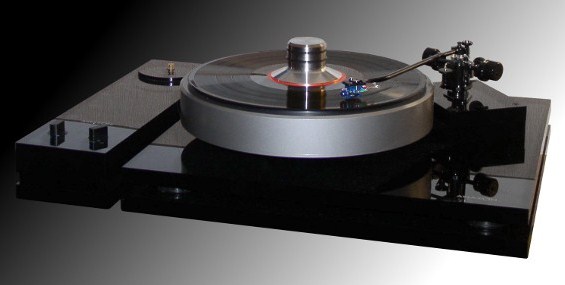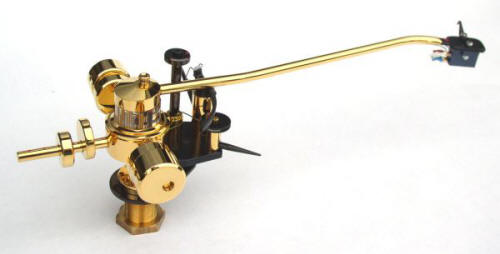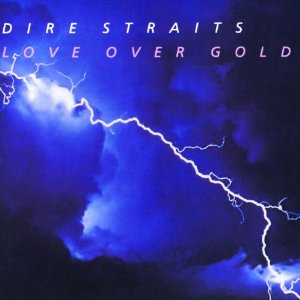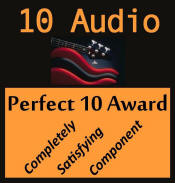“Stop reading this review and go listen to music. Enjoying my favorite music is far more interesting and rewarding than reading another review.” This is how you will feel when you have an Amazon Referenz turntable and MØRCH DP-8 Anisotropic tonearm waiting for you in your listening room.

The Amazon Referenz turntable is made in Germany and imported into the U.S. by SORAsound. At $12,995, it should have innovative engineering, excellent construction and build quality, and exceptional sound. Fortunately, it meets all of these requirements. The turntable is a dual-plinth design with the platter and tonearm mounted on the upper plinth and separated from the lower layer by six LRP (Low Resilience Polymer) half-dome sorbothane-like isolators. The plinth material is a cast plexiglass-like material called ICI, which has good damping properties. The platter weights about 26 pounds and is made from aluminum and cast acryl. From the SORAsound Web site:
The platter is “very similar to the vinyl. During a very complex, temperature optimized process the platter gets drilled to its exact dimensions and afterwards follows the quenching and tempering of the surface. This process prevents stress in the material, which would affect the acoustic qualities. Resonance diffuser in the inner area of the platter eliminates the well-known material resonances in massive plastics platter in the area between 9 kHz and 13 kHz.
“The rotation-center of the platter is a ceramic ball (main bearing) in the middle of the inversed bearing. Both the bearing bush and vertical axis are made from multiple hardened steel. The drive unit is totally separated from the running gear. A very thin polyamide string carries the power from the pulley to the platter. You can switch electronically between 33 rpm and 45 rpm. A LSC-Controller (Linear Speed Controller) monitors all the time the speed and keeps it absolute constant. … In addition, you can fine-tune each speed separately. … The heart of the drive is a DC-motor, which is usually used in nautical navigation devices.”
A special feature of the Amazon turntable is the battery power supply for the motor. This system is completely maintenance- and worry-free. Just leave the separate charging power supply connected to a live AC outlet and you will always have plenty of battery power for even the longest continuous listening session. Again, from SORAsound:
“The integrated rechargeable battery power supply is unique for analogue drives. In play mode, the rechargeable batteries as well as the motor are totally separated from the mains supply. Thereby, all the disturbing influences from the mains supply are kept away and smooth operation of the motor is guaranteed. All AMAZON motor units have an intelligent circuit, which monitors all parameters of the NiMH-batteries while charging and discharging. The system recharges the batteries automatically, when it is not in use. One charging cycle is enough to listen to 180 LP’s.”
The overall weight of the Referenz turntable is about 73 pounds. One example of the high quality construction is the perfect finish on the platter and record weight. When the platter is spinning, it is very difficult to see any movement, even close up. The light reflecting off of the platter is completely undisturbed by any imperfections in the platter as it rotates.
Other components on hand during the audition included a SOTA Cosmos IV vacuum turntable with Tri-Planar VII u2 tonearm, SOTA Satellite turntable with Origin Live Zephyr tonearm, Miyajima Kansui, Shilabe and Premium Mono phono cartridges, Bob’s Devices CineMag 3440 step-up transformers and Bob’s brand new CineMag 1131 “Blue” step-up transformers, Rogue Ares and Lamm LP2 vacuum tube phono preamplifiers, Mark Levinson 326S preamplifier with phono, Prism Orpheus Digital Interface with custom Windows 7 computer/music server, YG Acoustics Kipod II Signature Main Modules, Dali Mentor 5 speakers (from the home theater system), and Gallo TR-3 subwoofers. Power amplifiers included Modwright KWA 150 Special Edition, Levinson 532H, Cary SA200.2, and Manley Snappers. Interconnects and speaker cables are mostly Mogami. All front end components, including the preamplifiers, receive their AC power from a PS Audio AV-5000 power conditioner which is connected to the wall power with a 1 meter length of PS Audio PerfectWave AC-10 power cord. Other AC-10s were used elsewhere in the system, and I use Jerry’s DIY power cords on the music computer and Levinson preamp. An Audience aR2p-TO power conditioner or PS Audio Quintet is normally used for the power amplifiers. The Levinson preamplifier rested on three Ayre myrtle wood blocks.

The sample of the MØRCH DP-8 Anisotropic tonearm that accompanied the Amazon turntable was finished in a beautiful black gloss. Looking more like fine jewelry than audio hardware, the finish was perfect. Hans Henrik Moerch (English spelling of the Danish ‘Ø’) personally inspects every arm to assure faultless execution. His tonearms are also available dressed in chrome or gold. The quality of each of these finishes would elicit exclamations of wonder if seen in a display case at Tiffanys, complementing Faberge Eggs or any item of Elizabeth Taylor’s jewelry collection. The arm lists for about $5,000 depending on length and finish.
A common feature of MØRCH tonearms is the removable armwands. These easily detach from the top of the pivot area. Armwands are available with different weights to accommodate any cartridge. The internal wiring is silver. From the MØRCH Web site:
“The model MØRCH DP-8 Anisotropic has the same (sapphire) bearings as model DP-6, uses the same arm tubes, but a device for adjusting the VTA while playing is integrated. The bearing housing for the horizontal mode of motion provides for a substantial damping. The large effective mass for the horizontal mode of motion is stabilizing the arm tube horizontally, so that at very low frequencies it is only the cantilever of the cartridge, that is moving – not the tonearm. This means that the bass goes all the way down reproducing all the bass on the record with full amplitude and dynamics.”
The tonearm is free to move up and down on the sapphire bearings, and the large mass of the tonearm in the horizontal plane creates a stable platform for the cartridge. Since bass sounds are a result of horizontal (lateral) deflection of the stylus, reducing unwanted horizontal movement of the tonearm helps the bass performance of the cartridge/tonearm system. It works as advertised! The Referenz/DP-8 produces stunning bass: deep and powerful like you have probably never heard before, detailed, rich, and resonant, with the very lowest frequencies your speakers can deliver. If you are a fan of stand-up acoustic bass, tympani, organ, or thunder, this system will impress you on every listen. If your speakers are almost full range, adding the Referenz/DP-8 might very well give you the lower bass that you have been missing, potentially saving thousands of dollars on larger speakers. The bass seems “fast” by providing the leading edge of bass notes without smear. The resultant tone is clean and complete, allowing the vibration of bass strings to stand out in sharp relief from the background acoustic.
Moving up in frequency, this happy couple of turntable and tonearm continues to be extremely satisfying. The sound is continuous from the bass, through the midrange, and up into the highest treble (at least that I can hear) without any highlighting, forwardness, change in character, or other unwanted sonic anomaly. However you say it, “tone” – harmonic depth, resolution, clarity, transparency, etc. – is extremely well preserved. Interestingly, some distortions that I had previously attributed to record wear were reduced and very often eliminated from consciousness completely. This may be a benefit of superior tonearm damping.
The upper frequencies are clean and clear, with no sense of grit, grain, coarseness, or – and I listened for this specifically due to the silver arm wiring – brightness. None. The sense of proper proportion, frequency balance, and natural clarity is outstanding. This contributes to the desire to listen for hours at a time which can give you quite a bit of annoyance if the phone rings.
Mehran, the kind and generous proprietor of SORAsound, provided an additional armboard drilled for my Tri-Planar VII u2 tonearm. This was not a difficult request for Mehran to fulfill because he is also a Tri-Planar dealer. I had acquired the Tri-Planar from Mehran a couple of years ago. As we discuss the performance of the Referenz/DP-8 below, comparisons with the Tri-Planar mounted in place of the MØRCH are included.
The Tri-Planar is a fine tonearm, and I have enjoyed versions VII and VII u2 for several years. The performance of the Amazon/Tri-Planar, across all audiophile criteria, is elevated over the Cosmos/Tri-Planar. This is an important finding because I had believed that vacuum hold down is a necessary feature. Now I believe that a high-mass dampened platter is more important than vacuum. Replacing the Tri-Planar with the DP-8 on the Amazon table provides a further upgrade. Separately and together, the Amazon Referenz/MØRCH DP-8 play at a higher level.
Fleetwood Mac’s “Mystified”, from the Tango In The Night LP, (Warner 25471), sounds much more integrated and coherent with the Amazon/MØRCH than Amazon/Tri-Planar, as if all of the instruments and singers are sharing the same acoustic space. The Tri-Planar often breaks each sound into separate elements that can sound disconnected from the overall musical performance.

“Love Over Gold” from Dire Straits was completely and utterly involving. It left me mesmerized which ended with a gentle return to my surroundings with the beginning of “It Never Rains”. On Nicolette Larson’s album In The Nick of Time, (Warner HS3370), there is a voice track in “Let Me Go Love” which comes from behind the left loudspeaker. This is barely audible with the Cosmos/Tri-Planar.
Sade’s voice in “War Of The Hearts” on Promise, (CBS FR40263), floats beautifully in space. Her dubbed backing vocals are clearly distinct both laterally and in the depth location. The piano is tonally pure and harmonically complete. Micro-dynamic nuance is superb. Percussion has great resolution in the smallest tap of sticks, and the detail of fingers on strings helps to bring artists into the room. The brass is wonderfully clear and natural: sharp and biting as it should be, but never harsh nor brittle as it should not be.
While the Tri-Planar’s performance was elevated noticeably when it was moved from the Cosmos to the Amazon table, the preferred pairing – which took a surprisingly short amount of time to determine – was the Amazon/MØRCH. Changing from the Tri-Planar to the MØRCH tonearm involves a similar perceptual change as getting new prescription eye glasses. While the immediate change is disorienting, you quickly adapt to the new clarity and reduction in sensory stress. Going back to the old prescription is not an option. The Tri-Planar in comparison sounds somewhat unrefined and coarse.
The MØRCH DP-8 tonearm offers substantially more powerful and deeper, lower bass, while the Tri-Planar, having a leaner bass character, has just a small advantage in being able to more easily follow a bass line. To help illustrate the difference in bass extension and power, please consider the Tri-Planar as an 8 inch woofer, while the MØRCH is a 12 inch woofer. Big difference! The DP-8’s soundstage is just a bit less precise laterally, but is deeper and taller, with the front of the stage pushed back a small bit. In the upper frequencies, the Tri-Planar offers a more up-front, crystalline sound with a touch more shimmer, but this can push the sound over the edge into brightness and glare if the recording is less than excellent. This does not mean that the DP-8 is a “nice filter” that makes all recordings sound good. Recordings that sound bad on the Tri-Planar also sound bad with the DP-8.
Reviews that neglect to include the faults of the component under review are little more than advertising copy. So while I greatly enjoyed my time with this fine record playing system, there are a couple of minor issues. In the “up” position, the cuing lever on the DP-8 comes uncomfortably close to the bearing housing. Also, the finger lift is too short, in my opinion, but this is necessary to save weight on the lighter armwands. Amazon recommends placing the turntable on a dedicated stand or purpose-built turntable platform. They specifically mention stone as a poor shelf material. My rack is custom built from 2 inch thick sandstone shelves, and it does indeed transmit vibration up through the dual turntable layers. That the sound of the Amazon turntable may have suffered from it being installed on a non-optimal shelf may mean that I did not hear the Referenz performing at its best.
The Amazon Referenz turntable offers outstanding speed stability which provides the listener with huge and precisely focused sound stages. There is never any sense of wow or flutter or a disturbance in the tonal purity of any recording. Having a similar character, the high resolution, very extended and dynamic, and utterly musical performance of the MØRCH DP-8 Anisotropic tonearm set a new standard. Together, they offer a compelling reason to quickly complete whatever task is at hand and get back to listening to music.
Overall Rating: 10 LPs

Link to Distributor’s Web site: SORAsound
